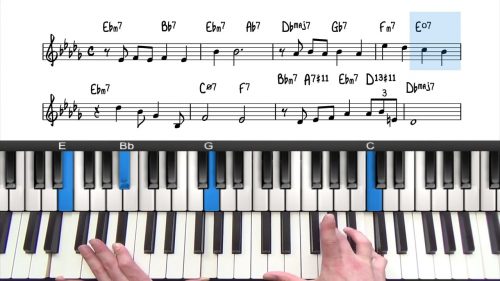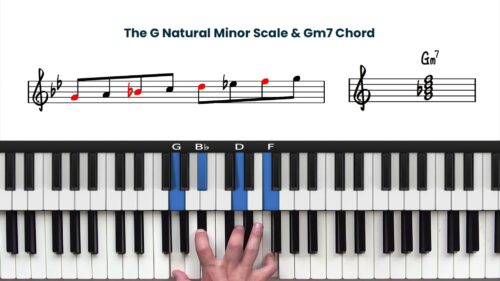Exploring the B Section of "Body and Soul"
Welcome to the 3rd lesson in our exploration of the jazz standard "Body and Soul" for beginner jazz piano students. In this lesson, we shift our focus to the B section – also referred to as ‘the bridge’ – which introduces two significant key modulations.
By the end of this lesson, you’ll gain a deeper understanding of these modulations and how to smoothly navigate them on the piano.
Understanding The B Section Modulations
The B section of "Body and Soul" is notable for its key changes. The A sections are in the key of Db major, but as we move into the bridge, the harmony shifts first to D major and then to C major. These modulations create a rich and dynamic harmonic landscape, offering both a challenge and an opportunity for jazz pianists to explore new tonalities.
In this lesson, we’ll dissect each of these modulations, ensuring you understand the theory behind the transitions and how to execute them fluidly on the piano.
Mastering the Key Changes
To navigate these key changes effectively, we start by isolating the 7th chords used in the B section. We then learn how to voice these chords as 2-handed spread voicings which not only sound more balanced but also allow for smoother transitions between chords. This technique spreads the chord tones across both hands, offering a fuller, richer sound that’s essential for jazz piano.
We also cover how to approach modulations with an appropriate 2-5-1 progressions, helping you to ‘connect the dots’ between the shifting key centers. This approach makes the modulations feel natural rather than abrupt, ensuring a seamless and coherent flow of music from the 2nd A section into the bridge.
Putting It All Together
By the end of this lesson, you will have a comprehensive understanding of the B section of "Body and Soul". We’ll play through the entire bridge, focusing on smooth modulations, effective voicing technique, and maintaining rhythmic precision. This will prepare you for the final lesson, where we’ll bring everything together and play the entire song from start to finish.
Practice Tips
-
Smooth Transitions: Focus on mastering the two key changes in the B section — from Db major to D major and then from D major to C major. Practice these transitions slowly to ensure a smooth modulation.
-
Voice Leading: Work on smooth voice leading by moving chord tones by half steps and whole steps when changing chords.
-
2-Handed Spread Voicings: Practice playing 2-handed spread voicings to add richness and balance to your sound. Experiment with placing the 3rd and 7th of the chord in different hands.
-
Rhythmic Precision: Pay attention to the rhythm when playing through the bridge. The quick succession of chords in bars 20-21 can be tricky, so start slowly and gradually increase the tempo.
- Diminished Chords Practice: Spend time visualising the notes of the Ebdim7 chord and explore different voicing options.






